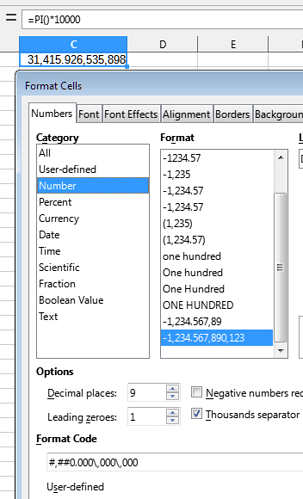I believe, that group separation is not limited to whole part only by any standard; the referenced Wikipedia article shows a sample of Pi and e with decimals grouped in fives. Moreover, there is a citation there in the article:
The International Bureau of Weights and Measures states that “when there are only four digits before or after the decimal marker, it is customary not to use a space to isolate a single digit”.
Note that “or after” that I emphasized in the citation.
It simply isn’t implemented in Calc; but aside from incompatibility of such feature with previous versions, it seems to not be something impossible / outright wrong.
The only problem with manually inserted fixed-position separators suggested by @JohnSUN could be together with the # optional digit mark, like in 0,###\ ###\ ###\ ### format string. Using those, the fixed separators would still appear in the output, making right-aligned numbers misalign … but then, a columns of different-width numbers with different decimals numbers would look awful even without the extra misalignment - so not much of a problem. If aligned to a decimal separator (using ? marks to have spaces instead of trailing zeroes, and using a monospace font), there would be no such misalignment problem… so my advise would be: just follow @JohnSUN’s advise, create a fixed format, and apply where needed.


